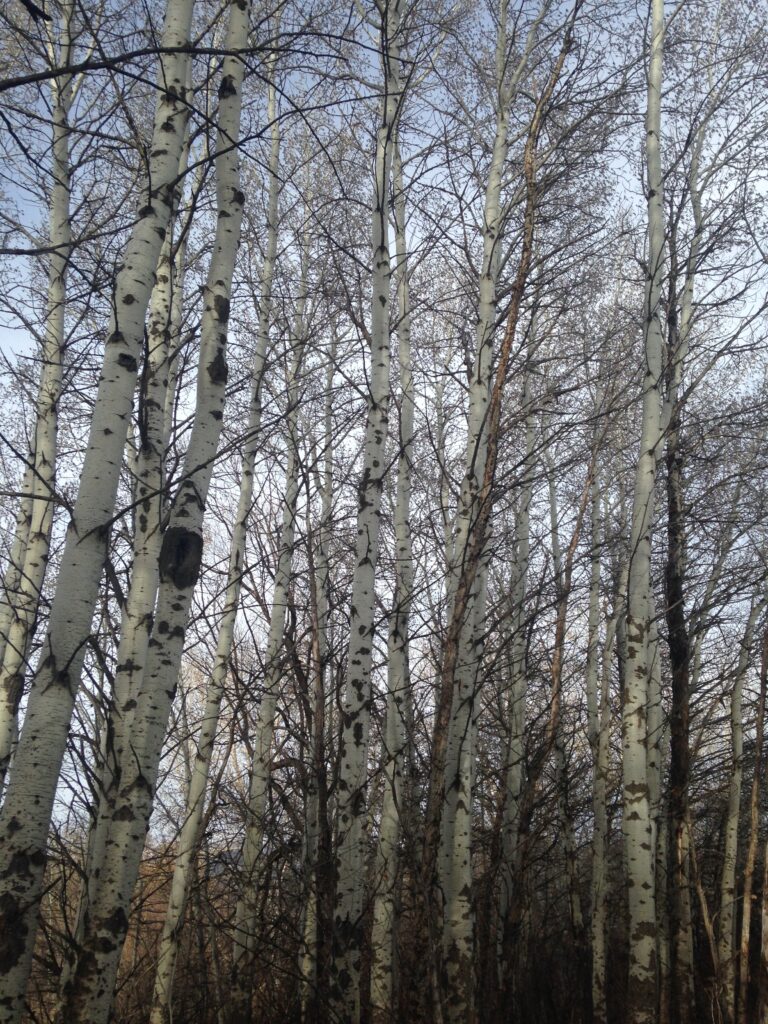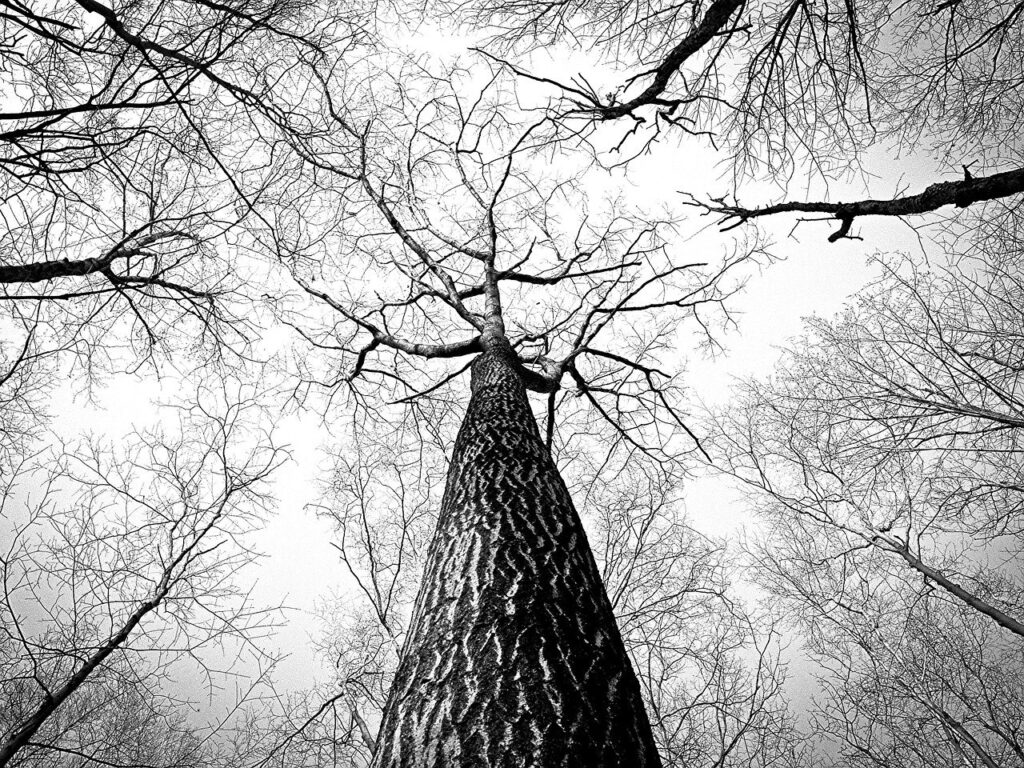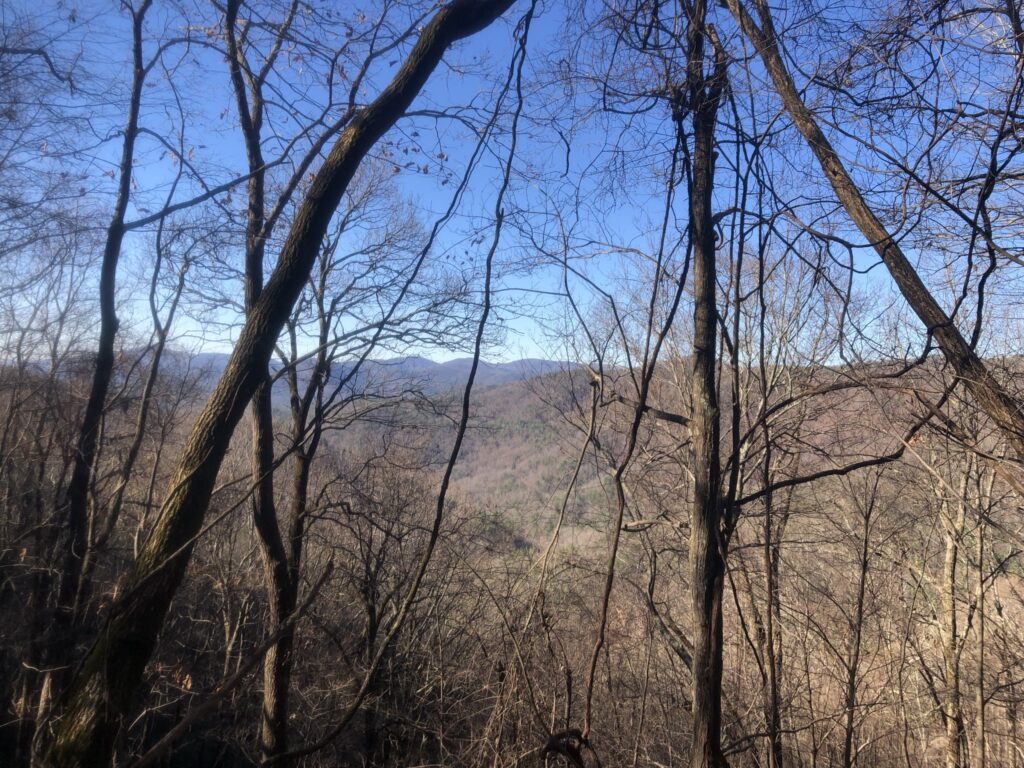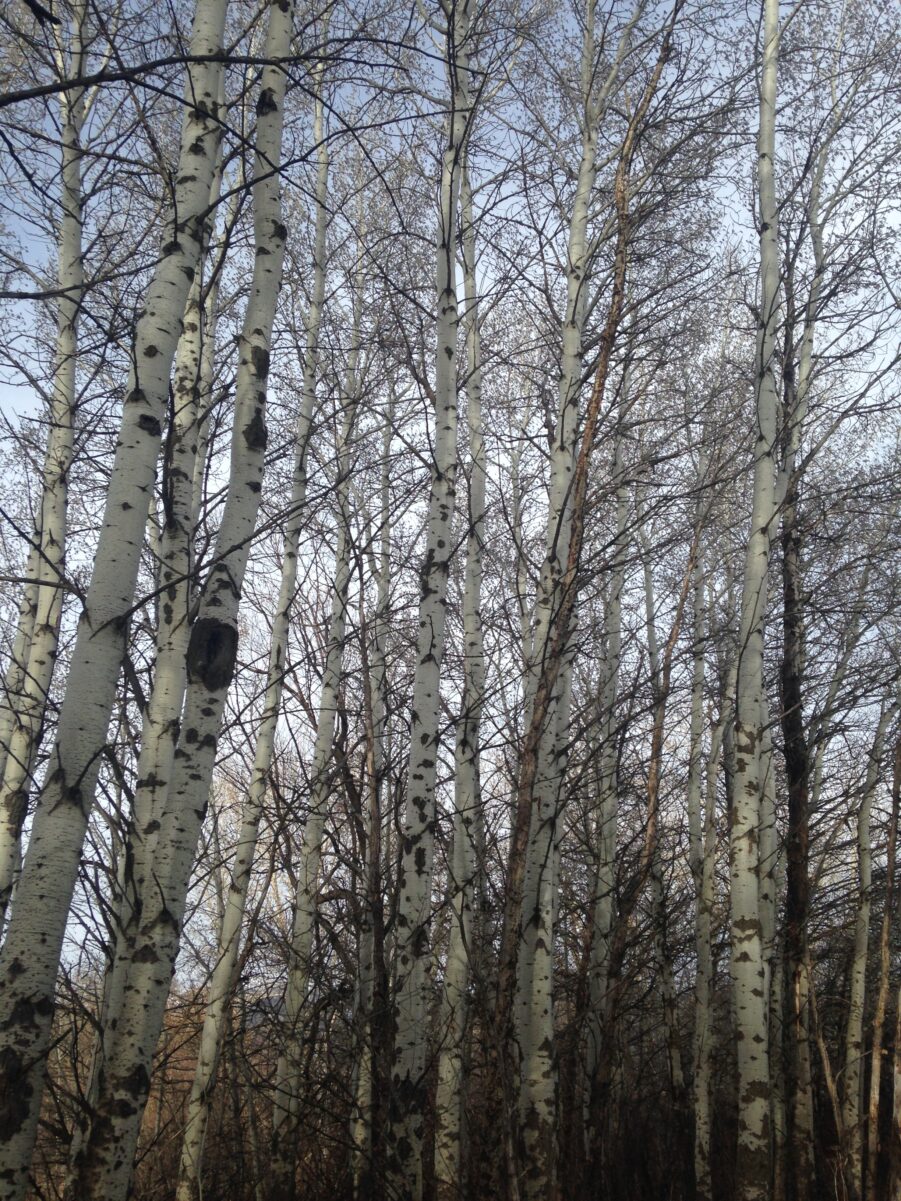Why do trees lose their leaves in the fall? For people living in temperate or northern climates, the Autumnal transition into winter usually involves lots and lots of leaves. Leaves turning beautiful colors, leaves blowing in the wind, leaves covering the ground, crunching under foot, or being raked into huge piles or blown away by landscaping crews. Trees lose their leaves in a dramatic seasonal display that is both iconic and deeply evocative.

Within a few months, many species of trees—often called hardwoods, or more specifically deciduous trees—don’t have any leaves at all, and show their bare branches until the following spring. The trees themselves normally survive all winter long, but their lush foliage has all dropped away, only to be replaced some months later.
Although this sudden transformation is familiar and comforting for most people, it certainly brings up a lot of questions when you take a moment to think about it, especially from the trees’ perspective. Why do some trees lose all of their leaves every year? Why go through the effort of having to grow them all back in the spring?
How do trees know when it’s the right time to drop their leaves? How do they make their leaves fall off? In this post, I explore one of Autumn’s most fundamental sights in nature—falling leaves.
What does deciduous mean?
We use the term deciduousness to refer to some trees’ adaptation of readily shedding leaves, especially at certain times of year. In other organisms it can refer to the shedding or loss of other body parts, but that’s a story for another time.
Deciduousness, trees losing their leaves, may seem wasteful, it comes with distinct advantages for the trees, especially in temperate climates where there are strong differences between seasons.
What are the advantages of trees dropping their leaves?
One helpful analogy might be a disposable paper cup. In what circumstances would you prefer having a paper cup to a well-crafted wine glass? People might use paper cups when:
- We need a lot of cups fast (cheap to produce!)
- If they are at risk of breaking (no crystal at the barbecue, please!)
- If re-using them wouldn’t be appropriate (dude, your mouth was on that)
For trees in areas with prominent winters, having ‘disposable’ leaves that theyshed each year means that they can invest less in protecting them. Like paper cups versus glass ones), they cost less energy overall.
They can also dispose of them after a single summer’s use, when they might be degraded or infested with harmful leaf-eating animals, fungi, or viruses. Damaged leaves from harsh winter storms are also less useful come springtime.
Holding on to delicate, fragile leaves (or hundreds of crystal glasses!) when you’re not going to use them for months presents its own challenges. Trees that shed their leaves reduce their liability to certain risks by shedding them.

More advantages of ditching leaves
Trees that lose their leaves are less likely to accumulate dangerous amounts of snowfall in winter that might break their branches, and provide less resistance to harsh winds that could knock them down or tear them apart.
Leaves are also very thirsty: Photosynthesis consumes large amounts of water, which can become scarce in winter, and make photosynthesis costly. It’s also dangerous for trees to have too much water in their bodies if temperatures are getting cold. They can even be exploded by freezing water at extreme low temperatures. By shedding their leaves, trees can avoid these risks altogether.
In this way, trees that lose their leaves in the fall eliminate the most demanding drains on their water budget when their promise of an energetic payoff is limited. This limited payoff is meanly because there is typically less available sunlight in winter, making leaves less worth the hassle. When conditions are drier during droughts or dry spells, it can become impractical for the tree to keep water-hogging leaves, so they may drop them sooner if low on water–what plant scientists call water stress.
Trees lose their leaves in the fall to rid themselves of leaf parasites or potentially harmful organisms; some deciduous trees have even been shown to drop infected or damaged leaves faster to be rid of them!
Naked for springtime
Additionally, many trees reproduce using flowers in the spring time, which need to be exposed to the air to be accessed by most pollinators, or to allow pollen to drift between trees on the wind. Having tons of bulky leaves around at that time might actually reduce a tree’s chance of reproducing, so being ‘naked’ in early spring has its advantages too.

Deciduous trees also reduce the cost of shedding their leaves. They can ‘reclaim’ some of the important nutrients from their green leaves before losing them. Leaves contain lots of tissues and chemicals rich in Nitrogen and Phosphorus, which are hard to come by. The trees essentially recycle the photosynthetic machinery from living leaves and store those nutrients for later use.
This reclamation is partly responsible for why leaves turn from green to vibrant reds, oranges, and yellows in the fall. The gorgeous colors that we associate with pumpkins, spooky season, and hot cider are all part of this larger process. Plants cut their losses before winter’s chill arrives.
But how do trees know when it’s time to shed their leaves?
Factors like water availability or leaf-eating organisms might make trees speed up or slow their leaf drop. But how do they know when autumn is rolling around?
Scientists generally agree that trees monitor photoperiod, the amount of light hours per day, to make this call. The photoperiod declines rapidly in fall (days become shorter), and temperatures fall.
Although plants can’t really ‘see’ the way we do, they do have cells called photoreceptors that sort of can. Photoreceptor cells contain protein molecules that react to certain light frequencies like proteins in our eyes. When triggered by light, they start chain reactions of hormones and other cellular signals that change the plants physiology. In other words, plants can ‘see’ how much light shines on them and that helps them ‘decide’ if it’s time to drop leaves.

How do plants make their leaves fall off?
Imagine a little pair of scissors snipping off leaves all over the forest. Although no actual cutting happens, the scientific term for the phenomenon of dropping leaves (or fruit, flowers, or anything else the plant is trying to get rid of) is abscission.
This word shares its linguistic root (scindere, latin word for ‘to cut’) with the word scissors. Abscission happens because of a change in plant hormones. This is analogous to how hormone changes in our bodies can change our heart rate, drive menstruation, or cause puberty. In this case, certain signal chemicals cause the plant to form a protective cellular layer between the branch and the base of the leaf stalk (the petiole) called the abscission layer or abscission zone.
Gradually, cells in the abscission zone enlarge and secrete proteins like lignin and suberin. These create a protective, hardened layer at the juncture between the leaf and the stem. This juncture cuts off the flow of water and nutrients and protects the place where the leaf detached.
Molecular pruning shears
Certain cells in the zone may secrete enzymes that break down the tissues holding the leaf to the branch. The cells themselves may self destruct, popping themselves to break the connection by filling with water.

Eventually, a heavy rain or breeze will break these weakened links, and the leaf will fall. In its absence, a leaf scar will be visible on the branch. This includes signs of the former veins or vasculature that the plant used to exchange with the leaf. Keep an eye out for these when you’re examining twigs and branches in winter. Leaf scars can be really useful in identifying tree species when you don’t have much else to go on.
Losing leaves helps trees survive harsh, seasonal conditions in thrifty and inventive ways.
So next time you’re sipping a pumpkin-spice latte and watching the leaves drift slowly down outside, or watching children jump into carefully raked leaf-piles, remember that there’s a good reason for all that beauty and mess.
Thanks for reading why trees lose their leaves!
If you’ve got questions or comments, feel free to leave them below or get in touch using the contact page. Until next time!

